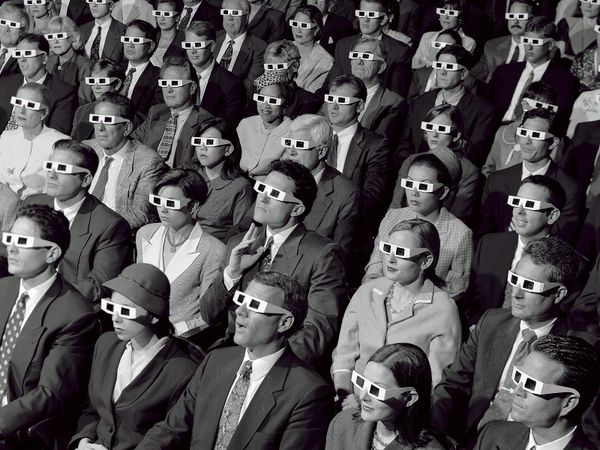Notes About Audience
Think about it: are web sites read like traditional books or newspapers? Or are they used, like a hammer or Ziploc bag? Or both? Yes, web sites are containers for information, but so are books. Books are also used like tools: they have parts that require a certain literacy to utilize. We might take this a step further and ask ourselves: for whom are web sites written?

The traditional answer to this, say in a college composition course, is the audience. Often, we conceive of this audience in an academic way: people that we imagine are reading our writing. This communication is one-way, from you to the passive receiver of the information. Certainly, an audience might react with pleasure or indignation, but rarely does this traditional mode of writing suggest a dialog or discussion.
According to Jakob Neilson, users scan web pages. He suggests using key words, headings and sub-headings, fewer words, and directed content.[1]
Yet, when we write for the web—especially in a Web 2.0 world—we no longer write to a passive audience. Rather than a passive reading, people are more often responding to what they read, in an active way. They use web sites in ways that print did not encourage or facilitate. So, while audience suggests a passivity, like one might watch TV, users suggests an active engagement. Not only do users search, click on links, and jump around on the web, they comment, critique, and communicate in a way that they’ve never done before the computer.
Another aspect that “user” suggests is a real audience, not some imaginary academic one. To whom are you writing; how will they use the information you present; and how are they likely to respond? Not only do we need to take content of the site into consideration, but how it’s presented—i.e., the design of the site, from navigation, to structure, to images. When analyzing these structures, we often call this usability testing. How can you make the site useful for your intended users?
How many times have you gone to a web site that seems to lack a coherent structure? Or has so much junk on the screen, that the real content and purpose of the site is not apparent? Are these sites user-friendly, or intuitive? What do you expect to see when you go to a web site? What web sites do you find particularly elegant in that they are easily used? Are there any sites on the web that correspond to what you would like to do? What elements from their site make it particularly useful?
After doing your research (you might begin with the links below), compose a general statement of usability before embarking on any digital writing project. List:
Several web sites that have influenced your particular project;
- Particular types of users that you hope to attract;
- Elements of a site that will attract those users;
- How the various nodes of the site will fit together;
- How users will navigate the various nodes of the site.
reference
- ↑ Nielson, Jakob (October 1, 1997). "How Users Read on the Web". Nielson Norman Group. Retrieved 2018-12-26.
